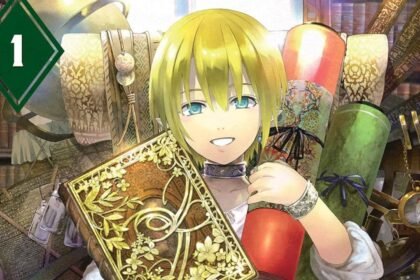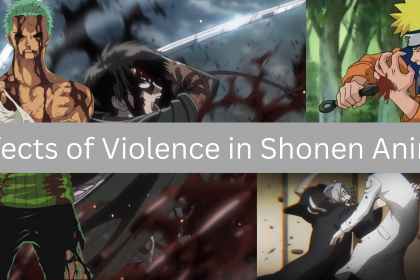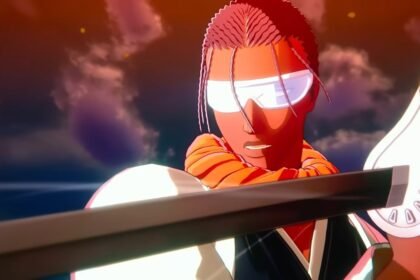Anime and manga have become global phenomena, captivating audiences with their unique storytelling and vibrant art styles. One aspect that has gained increasing attention is the representation of LGBTQ+ characters in these mediums.
To understand the portrayal of LGBTQ+ individuals in anime and manga, it is essential to explore the historical context. It is also important to know more about the societal attitudes in Japan.
Portrayal of LGBTQ+ characters in Anime and other Japanese Media
Japan has a complex relationship with LGBTQ+ issues, shaped by its historical, social, and cultural factors. Historically, Japan had a more accepting attitude towards same-sex relationships. They also had a more accepting gender nonconformity, with examples found in ancient Japanese literature and art.
However, the influence of Western ideas during the Meiji period changed the situation. A situation which then led to the criminalization of homosexuality and the stigmatization of LGBTQ+ individuals.
How Anime and Manga Represent LGBTQ+
Anime and manga offer a diverse range of narratives and genres. Some of them even providing a platform for the representation of LGBTQ+ characters and themes. One notable aspect is the exploration of LGBTQ+ characters in anime.
These representations are sometimes depicted regarding some issues through allegorical and metaphorical storytelling. By using fantastical elements and fictional worlds, anime and manga can delve into sensitive topics. But still, anime and manga delve to these topics while maintaining a level of distance from reality. This allows for more creative freedom and can serve as a way to reach broader audiences.
Anime and Manga Titles with LGBTQ+ Representation
There are numerous examples of anime and manga titles that feature LGBTQ+ characters and storylines. One popular series that has gained international recognition is “Yuri on Ice.” This sports anime revolves around the relationship between two male figure skaters. Throughout the time, “Yuri on Ice” has garnered praise for its realistic portrayal of a same-sex romance.
In addition to those two titles, there are several other anime and manga titles that feature LGBTQ+ representation. Each of these titles showcasing the diversity and breadth of storytelling within the medium. “Bloom Into You” is the example of manga and anime adaptation that explores romance between high school girls. The story delves into the complexities of self-discovery, societal expectations, and the development of romantic relationships.
Another notable title with LGBTQ+ characters in anime is “Revolutionary Girl Utena,”. Many critics claimed that this is the groundbreaking anime series that challenges gender norms. Utena also deeply explores themes of identity and sexuality. The protagonist, Utena Tenjou, defies traditional gender roles as she navigates a surreal and symbolic world filled with duels and intrigue. The series tackles same-sex relationships and ambiguous sexuality with a beautifully crafted narrative that captivates viewers.
“Given” is a manga and anime series that centers around a group of four high school boys who form a band. The story not only delves into their musical aspirations but also explores the budding romantic relationship between two of the main characters. “Given” portrays a same-sex romance with sensitivity and authenticity, highlighting the emotional complexities and challenges faced by LGBTQ+ individuals.
Further Readings: Experiencing Love and Romance in Anime
More Examples for LGBTQ+ Representation in Anime and Manga
Additionally, “Wandering Son” deserves mention for its portrayal of LGBTQ+ characters in anime and manga with portrayal of transgender youth. The story follows two friends, Shuichi and Yoshino, as they navigate their gender identities and the challenges of coming out in a conservative society. “Wandering Son” provides a sensitive and introspective exploration of gender dysphoria and the experiences of transgender individuals.
“Citrus” is a popular yuri manga and anime that explores a romantic relationship between two high school girls, Yuzu and Mei. Their complex dynamic unfolds amidst family secrets and societal expectations, offering a heartfelt portrayal of same-sex love and the challenges that come with it. With its emotional depth and engaging storyline, “Citrus” resonates with audiences seeking authentic representation of lesbian relationships in anime and manga.
One more example is “No. 6,” a dystopian anime series that depicts a same-sex relationship between two male protagonists, Shion and Nezumi. Set in a futuristic city-state, the story intertwines elements of mystery, rebellion, and romance. “No. 6” challenges societal norms and addresses themes of identity, loyalty, and the power of human connection.
These examples are just a glimpse of the diverse range of anime and manga titles that feature LGBTQ+ representation. Each of these series brings its own unique perspective and storytelling approach, contributing to a more inclusive and authentic portrayal of LGBTQ+ characters and relationships in the medium.
Conclusion
The representation of LGBTQ+ characters in anime and manga has come a long way, reflecting the changing attitudes towards gender and sexuality in Japanese society. These mediums have provided a platform for diverse narratives and have allowed for the exploration of LGBTQ+ issues in creative and thought-provoking ways. While there is still progress to be made, the increasing visibility and positive reception of LGBTQ+ representation in anime and manga indicate a promising future for greater inclusivity in Japanese media.
More questions regarding LGBTQ+ Anime and Manga
-
Are LGBTQ+ contents in anime and manga becoming more common?
Yes, LGBTQ+ characters are increasingly common in anime and manga. While representation varies across different titles, there has been a noticeable shift towards more diverse character portrayals in recent years.
-
Is LGBTQ+ representation in anime and manga diverse?
Yes, there is a growing diversity in LGBTQ+ representation. Anime and manga feature characters across the LGBTQ+ spectrum, including gay, lesbian, bisexual, transgender, and non-binary individuals. This diversity allows for a more nuanced exploration of different identities and experiences within the LGBTQ+ community.
-
How do Japanese audiences perceive LGBTQ+ characters in anime as proper representation?
Attitudes towards LGBTQ+ representation in Japan are evolving. While some viewers embrace the inclusion of diverse characters, others may hold conservative views or remain unaware of LGBTQ+ issues within the medium. However, there is a significant segment of the audience that appreciates and supports LGBTQ+ representation, leading to increased demand for more inclusive narratives.
-
Have there been controversies surrounding LGBTQ+ representation in anime and manga?
Yes, there have been controversies surrounding LGBTQ+ representation. Some critics argue that certain portrayals perpetuate stereotypes or treat LGBTQ+ identities as mere plot devices, which can be harmful and reinforce misconceptions. However, it is important to note that there has also been a positive reception from many viewers who appreciate the increased visibility and authentic representation of LGBTQ+ characters.
-
What is the future of LGBTQ+ representation in Japanese media?
The future of LGBTQ+ representation in anime and manga looks promising. As societal acceptance grows and audiences demand more diverse narratives, creators are likely to continue exploring LGBTQ+ themes in their works. This can lead to greater understanding, empathy, and inclusivity both within the medium and in society as a whole. The increasing visibility of LGBTQ+ characters and stories in anime and manga indicates a positive trajectory towards a more inclusive and representative media landscape.













